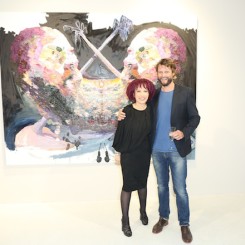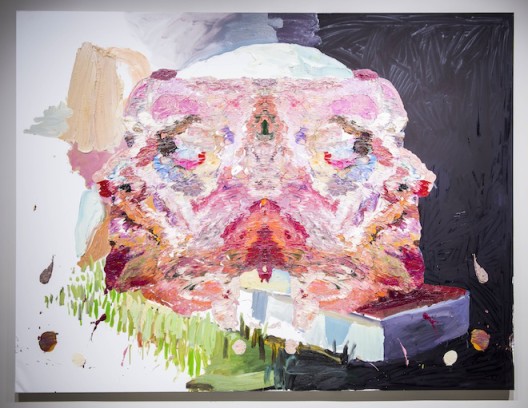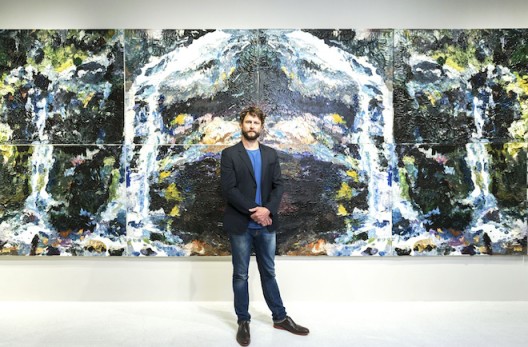Straight White Male: Ben Quilty Solo Exhibition
Pearl Lam Galleries (6/F, Pedder Building, 12 Pedder Street, Central, Hong Kong), Jan 15 – Mar 1, 2015
Boy, you’ll be a man soon.
Those words, an alternate take on Neil Diamond’s famous lyric (“Girl, you’ll be a woman soon”), float through my head as I encounter the printed title “Straight White Male”, the first exhibition of of Australian artist Ben Quilty at Pearl Lam Galleries.
What does the Straight White Male look like, and what does he do? I look through the paintings for clues, and in the large white space—empty save for this reviewer and the works—I find myself posing more and more questions to the artist. Is the archetypal Straight White Male possibly your Dad, staring into the melancholy distance where the boy he is talking to was once himself? Time flies. The next minute, Dad shows up with peacock hair in a painting, asking for your approval of his new style (“Dad with Peacock Hair”, 2013). Or was that something you dreamed up while dozing off under the scorched Afghanistan sky while stationed there as a war artist? And the rug you slept on; Dad was there, too, watching beneath you with four heads (“Painting For a Rug About My Dad”, 2014). Rest well, my son. Dad is there no matter where you go, which may be what it means to be a man . . .
Does war do an effective job of separating the boys from the men? You could ask Private Phil Butler over there. He spent 12 months in Nui Dat during the Vietnam War in 1970. His eyes tell you what he has seen, what he has lost. The horror, the horror. You paint his portrait a second time, his lips sealed, a metal handle coming out of the left side of his face (“Straight White Male [Phil]”, 2014), a mug that contains the pain and love men serve up for each other again and again and again.
You look into the mirror late one afternoon and find that your head is falling off your neck, hanging at an impossible angle. The sight reminds you, perhaps, of another painter who has probed the nature of hurt—Francis Bacon. But you are still yourself, and the bruises on your arms and torso washed with turpentine (which you handled with your own brush just a minute ago) attest to this.
You make your way out to the southern highlands of New South Wales and see hordes of tourists snapping selfies by the Fairy Bower Falls. It is a pretty sight— perhaps too pretty. As you yourself have known, the task of painting a land one calls home can result in a Rorschach blot smeared with so much flesh and violets and crimson jewels (“Homeland”, 2014); the beauty becomes suffocating, and we lose sight of the gravity of being human. You know that those phones and cameras whose shutters go off incessantly on that spot will not register the smiles of the aboriginal people who were massacred there in the 19th Century. You decide to make your own image of the location in a way that feels more true, which is to paint a panoramic depiction of the land, violently pressing paint-filled canvas against paint-filled canvas, like water crashing down relentlessly on rocks and when you are done, no humans are present in the picture, but all of them are accounted for (“Fairy Bower Rorschach”, 2012).
No man is an island, as the saying goes. But what becomes of a photojournalist who makes his way out to an island on the Pacific Ocean that could have been a picturesque Utopia, only to find that the sky was carved with a painter’s spatula into an ominous shade of burnt umber, blacker than black, and that the flowers of the ground were trampled by boots that leave tell-tale vermillion streaks (“The Photojournalist (AQ)”, 2014)? Will he get lost in strange territory, find himself proud to become equally as savage as the landscape and never leave? There is no easy answer, and you don’t pretend to know even as you keep asking the world. The sea remains blue, and green, and white. In the midst of all this, does God exist? Quilty’s paintings give me the sense that Man does. That may be enough, for now.
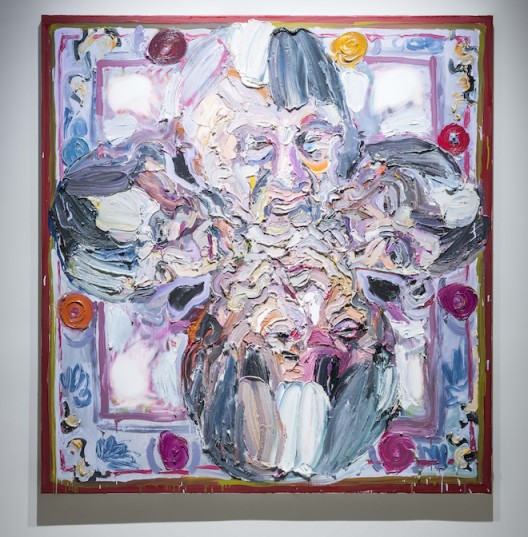
Ben Quilty, “Painting For a Rug About My Dad”, oil on linen, 160 x 170 cm, 2014. Photo by Mike Pickles / studioEAST.
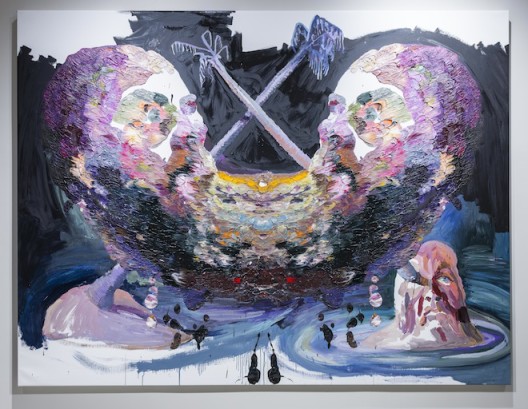
Ben Quilty, “Pacific Self-Portrait”, oil on linen, 202 x 265 cm, 2014. Photo by Mike Pickles / studioEAST.
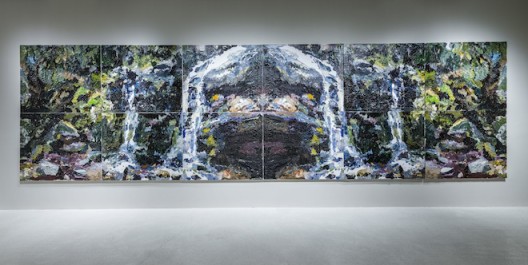
Ben Quilty, “Fairy Bower Falls Rorschach no.2”, oil in linen, 220 x 780 cm, 2014. Photo by Mike Pickles / studioEAST.
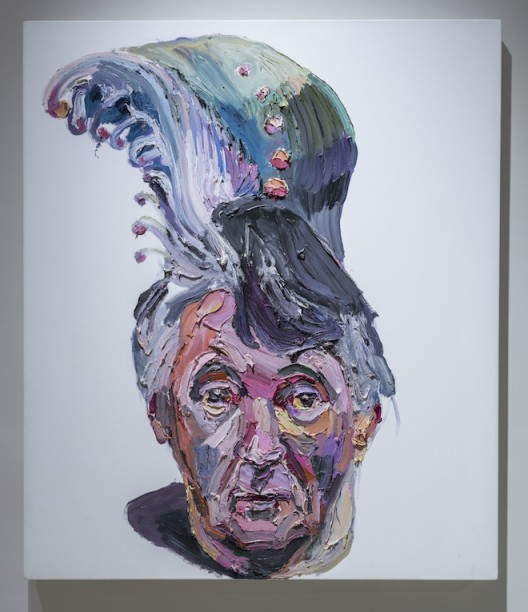
Ben Quilty, “Dad with peacock hair”, oil on linen, 135 x 115 cm, 2013. Photo by Mike Pickles / studioEAST.
